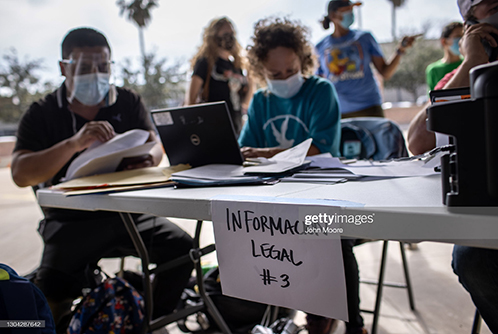News Americas, FORT LAUDERDALE, FL, Mar. 5, 2021: The Joe Biden $1.9-trillion coronavirus relief bill looks set to pass the Senate as it did the House, and be ready to be signed into law, even though right wingers preach about woe and doom as they blatantly worshipped a gold idol at their CPAC propaganda shop.
The International Monetary Fund estimates that the spending plan would increase economic output by at least 5 percent of gross domestic product over three years, the equivalent of about $1 trillion in additional output.
But hot on the heels of this bill is the upcoming immigration reform bill. A lot has been said about this measure, mostly glee from advocates on the left and doom and gloom of overrun borders from the right. What has been missing from the 2021 immigration reform discussion to date is the economic boon that this measure could bring to the coffers of the United States and to the US Citizenship & Immigration Services, (USCIS).
So, here’s my breakdown based on simple math and the number of undocumented immigrants who can benefit from this.
According to most estimates, there are around 11 million undocumented immigrants in the U.S. The number may likely be more, especially since the bill proposes anyone living in the country without legal status as of Jan. 1, 2021.
Given that the measure proposes fines to legalize should the measure become law, that means that at USD 1,000 fine per adult, USD 11 billion could be added to USCIS alone.
That does not of course include fees, which according to USCIS’ current adjustment of fee rates would run another $1,140 per applicant. That means if we are following the same math of 11 million times $1,140, the amount in fees to USCIS from undocumented immigrants adjusting their status alone – outside of fines – will be over US 12.5 billion dollars.
That means that from undocumented immigrants adjusting their status alone and being put on a path to legalization, USCIS will gain $23.5 billion within months.
This does not take into account the Dreamers, those with TPS (Temporary Protected Status), and the other immigration applicants who will also be able to benefit from this extensive reform, including those applying for farm and other employment visas.
Now let’s look at the economic facts from the experts who have studied this for years. Back in 2013, when the Obama White House had tried to get immigration reform done in its second term, The Congressional Budget Office (CBO), had estimated that enacting the Senate’s version of the immigration reform bill at the time would have increased real GDP relative to current law projections by 3.3 percent in 2023. It would have jumped by 5.4 percent in 2033, according to the CBO then, and an increase of roughly $700 billion in 2023, and $1.4 trillion in 2033 in today’s dollars.
Additionally, a 2010 study by Dr. Raúl Hinojosa-Ojeda, found that under a CIR (Comprehensive Immigration Reform) that includes a legalization program for undocumented immigrants, a cumulative $1.5 trillion would be added to U.S. GDP over 10 years. In stark contrast, a deportation-only policy would result in a loss of $2.6 trillion in U.S. GDP over 10 years.
The same study had also found that the higher earning power of newly legalized workers would mean increased tax revenues of $4.5-$5.4 billion in the first three years to the US coffers.
Let’s be clear. This is no handout to immigrants, but simply a hand up that is mutually beneficial, especially in real dollars immediately to USCIS.
America and Americans stand to gain more from an immigration reform policy of legalization and citizenship than they do from no reform at all. The numbers simply don’t lie!
The writer is publisher of NewsAmericasNow










